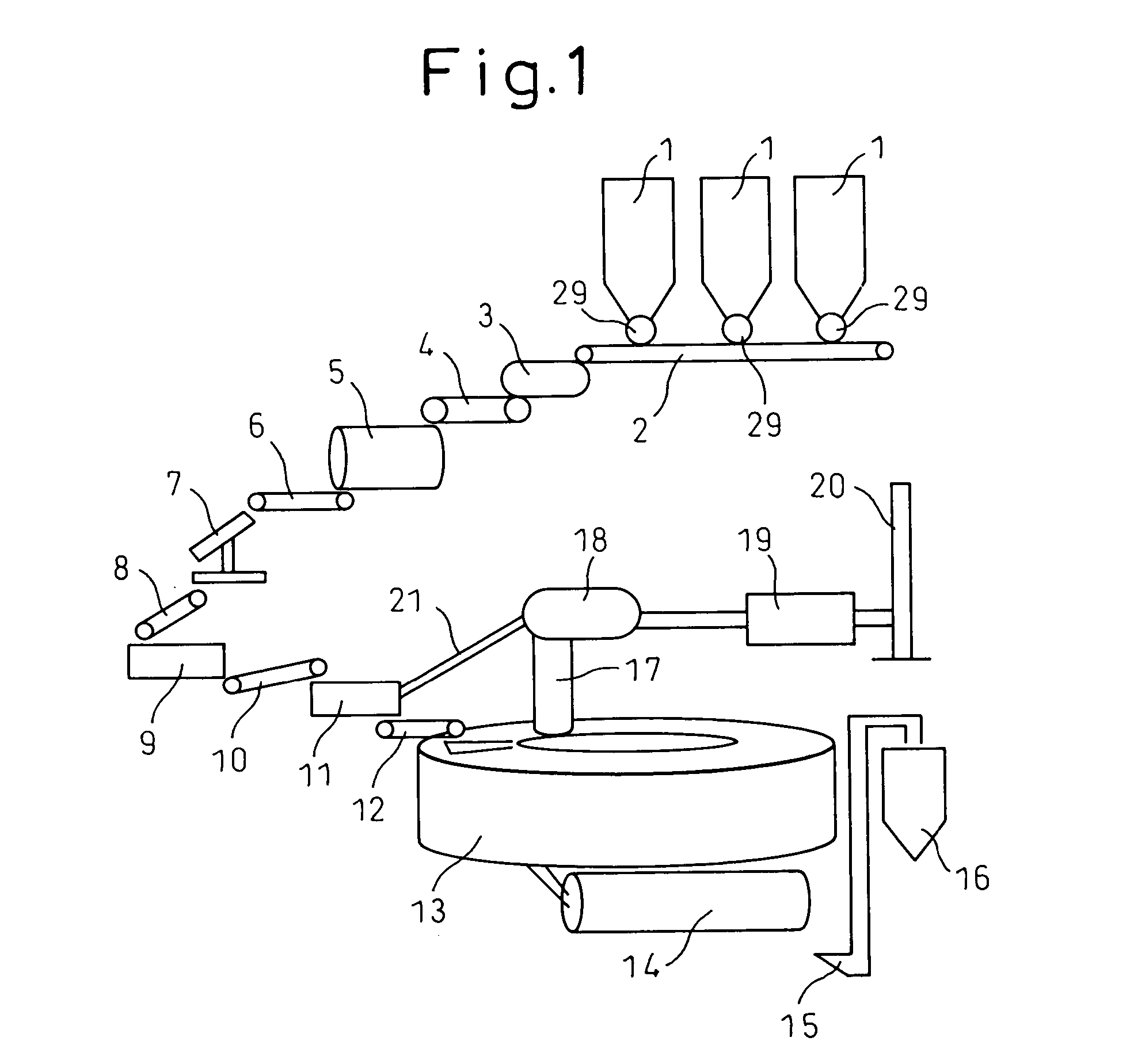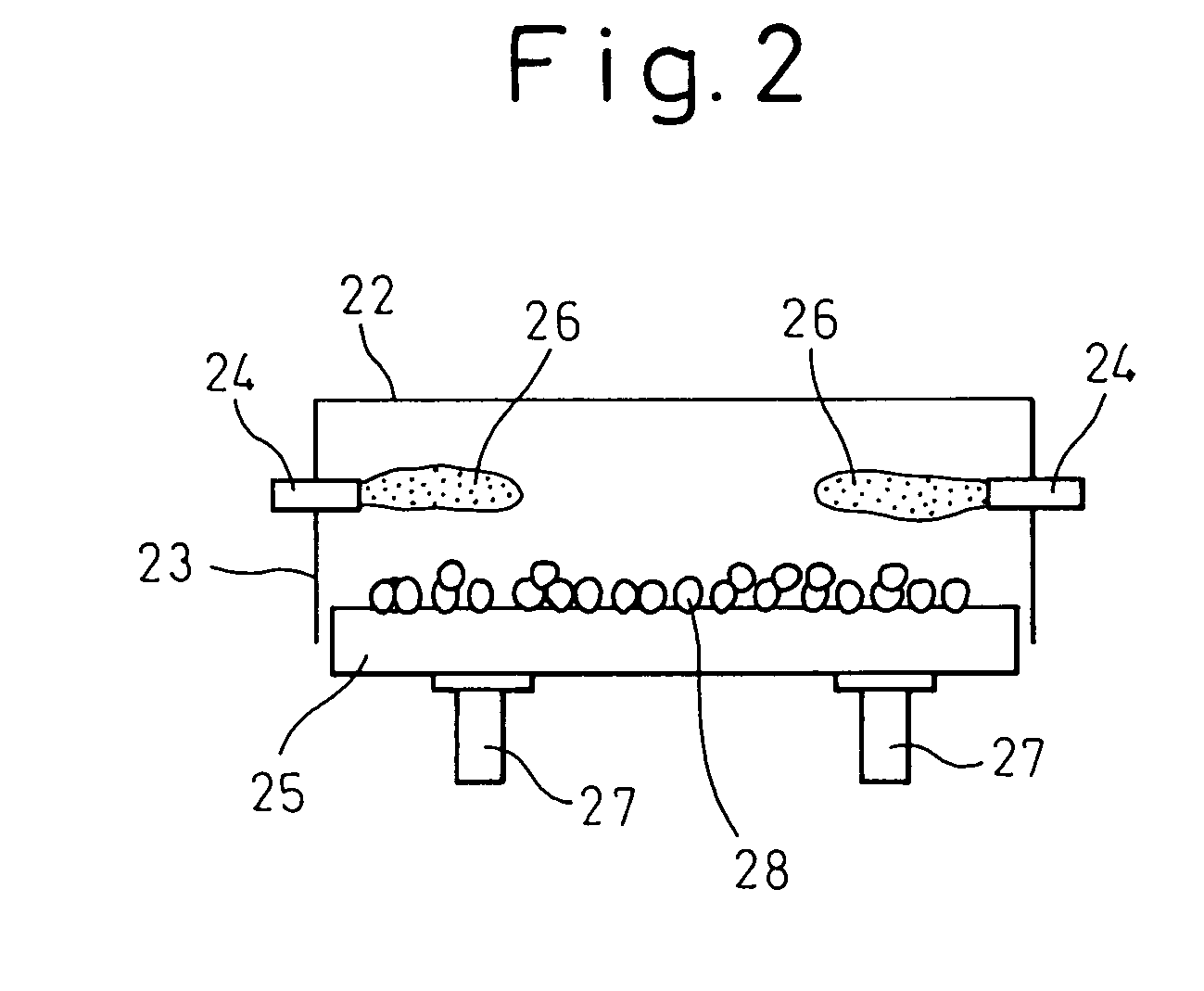Metal oxide-containing green pellet for reducing furnace, method for production thereof, method of reduction thereof, and reduction facilities
- Summary
- Abstract
- Description
- Claims
- Application Information
AI Technical Summary
Benefits of technology
Problems solved by technology
Method used
Image
Examples
example 1
[0087] The results of operation using the facility of a rotary hearth reducing furnace shown in FIG. 1 are shown. The facility produces 15 tons of reduced iron pellets for blast furnace use every hour. There were three materials: pellet feed powder ore, converter dust, and coke fines.
[0088] The pellet feed ore contained 89 wt % of ferric oxide (Fe.sub.2O.sub.3), had a mean particle size of 68 .mu.m, and had a ratio of particles of not more than 10 .mu.m size of 13 wt %. Further, the converter dust contained 34 wt % of iron oxide (FeO) and 43 wt % of metal iron, had a mean particle size of 6 .mu.m, and had a ratio of particles of not more than 10 .mu.m size of 81 wt %. The coke dust fines contained 83 wt % of carbon, had a mean particle size of 89 .mu.m, and had a ratio of particles of not more than 10 .mu.m size of 8 wt %.
[0089] In Example 1, 40 wt % of pellet feed powder ore, 37 wt % of converter dust, and 23 wt % of coke dust fines were mixed and fed out on to a feed transport con...
example 2
[0096] The results of operation using the facility of a rotary hearth reducing furnace shown in FIG. 1 are shown. The facility produces 15 tons of reduced iron pellets for blast furnace use every hour. There were three material storage bins containing pellet feed powder ore, converter dust, and coke dust fines of a coke dry quencher.
[0097] The pellet feed ore contained 89 wt % of ferric oxide (Fe.sub.2O.sub.3), had a mean particle size of 68 .mu.m, and had a ratio of particles of not more than 10 .mu.m size of 13 wt %. Further, the converter dust contained 34 wt % of iron oxide (FeO) and 43 wt % of metal iron, had a mean particle size of 6 .mu.m, and had a ratio of particles of not more than 10 .mu.m size of 81 wt %. The coke dust fines contained 83 wt % of carbon, had a mean particle size of 89 .mu.m, and had a ratio of particles of not more than 10 .mu.m size of 8 wt %.
[0098] In Example 2, 40 wt % of pellet feed powder ore, 37 wt % of converter dust, and 23 wt % of coke dust fines...
PUM
| Property | Measurement | Unit |
|---|---|---|
| Diameter | aaaaa | aaaaa |
| Length | aaaaa | aaaaa |
| Length | aaaaa | aaaaa |
Abstract
Description
Claims
Application Information
 Login to View More
Login to View More - R&D
- Intellectual Property
- Life Sciences
- Materials
- Tech Scout
- Unparalleled Data Quality
- Higher Quality Content
- 60% Fewer Hallucinations
Browse by: Latest US Patents, China's latest patents, Technical Efficacy Thesaurus, Application Domain, Technology Topic, Popular Technical Reports.
© 2025 PatSnap. All rights reserved.Legal|Privacy policy|Modern Slavery Act Transparency Statement|Sitemap|About US| Contact US: help@patsnap.com



